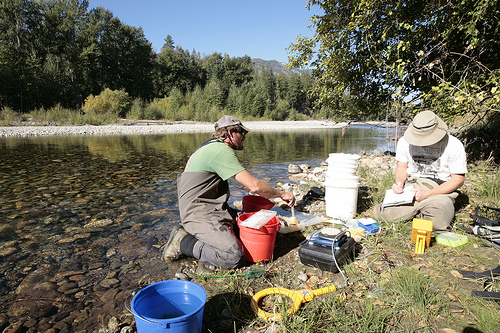Status monitoring research estimates the status of fish populations and watershed conditions, and over time tracks indicators of habitat, water quality, water quantity and other factors that affect watershed health.
Status monitoring also includes collecting daily adult and juvenile fish passage data at the eight federal dams on the Columbia and Snake rivers. This information helps inform real-time decisions about hydrosystem operations.

Biologists record and track fish status in individual streams and tributaries throughout the Basin. Photo courtesy of Bureau of Reclamation
The Forest Service and the Bureau of Land Management have two long-term aquatic habitat and trend monitoring programs on federally-managed lands within the basin:
- PIBO (Pacfish/Infish Biological Opinion) is associated with the aquatic strategies. (PACFISH addresses anadromous fish-producing watersheds in the Northwest and northern California and INFISH covers native inland fish in Oregon, Washington, Idaho, and Montana.
Through PIBO, the land management agencies collect stream habitat, macro invertebrates, riparian vegetation and temperature data within 1251 field sub-watersheds within the Columbia River Basin. In addition PIBO has collected data at over 400 Designated Grazing Monitoring Areas to specifically evaluate stream habitat trends as related to grazing.